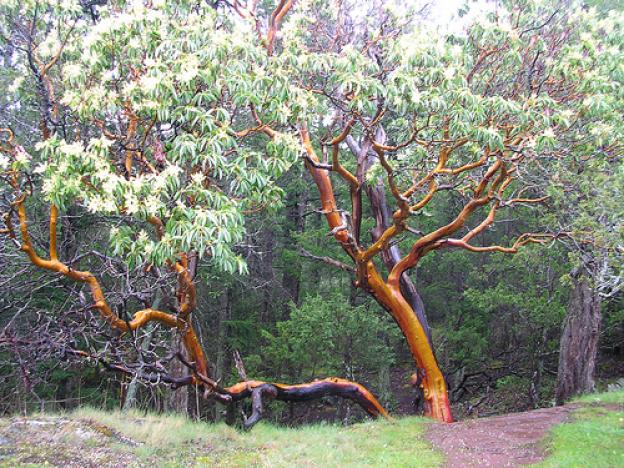The visually striking madrone tree is a memorable element of the North American Pacific coastal landscape. From Northern California to British Columbia, Arbutus menziesii clings to steep slopes and bluffs, bending and twisting its way out of rocky outcroppings like a crazy contortionist. Against the seaside, the thick and glossy leaves feather back toward the land due to the constant pressure of the ocean's air currents. Farther inland, these dramatic evergreens dot many hillsides and hiking paths within the region.
In the summer, the younger branches have a rich, dark red bark that peels into curled, papery-thin flakes resembling chocolate shavings in a mocha latte. Underneath, an impossibly smooth and satiny surface is revealed, with a gorgeous greenish hue that deepens into a deep cinnamon-red by summer's end. Little is understood about why the madrone “exfoliates” in this way. A third kind of bark—rougher and dark brown—girds the trunks of older, thicker trees.
In springtime, tiny fragrant bunches of white flowers blossom; by fall they become clusters of red berries roughly the size of large blueberries. Native Americans used the berries to make cider and various remedies, and many regional animals, like mule deer, black-tailed deer and raccoons, depend on the berries for food. In fact, deer love to feast on baby madrones and will strip them clean if given a chance—unless the robins, cedar waxwings and varied thrushes beat them to it.
—Aaron Carnes
Category:













